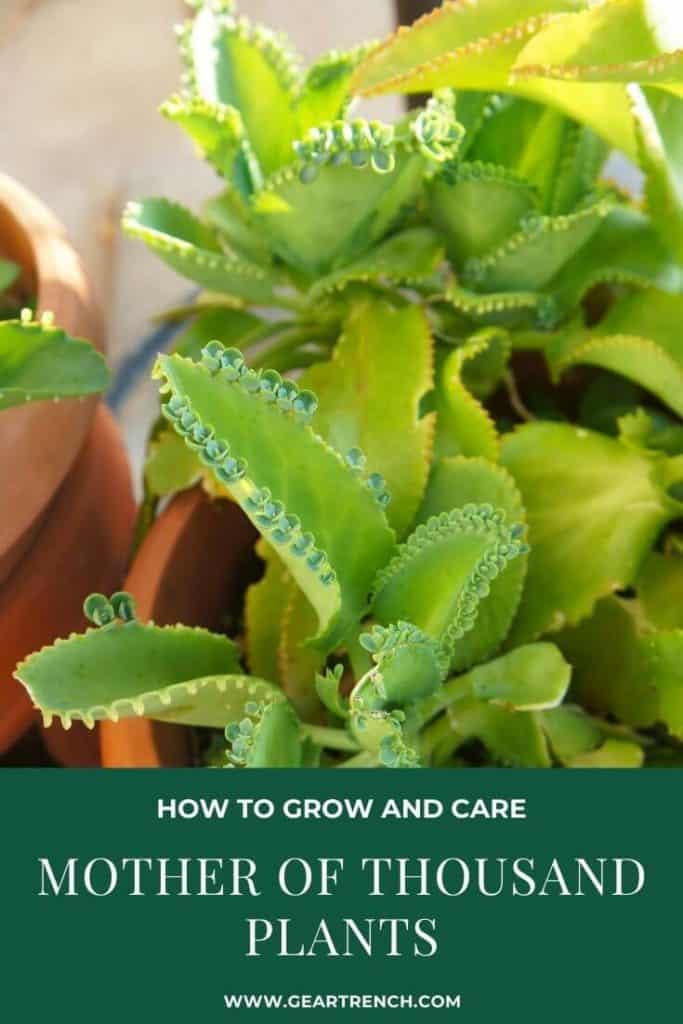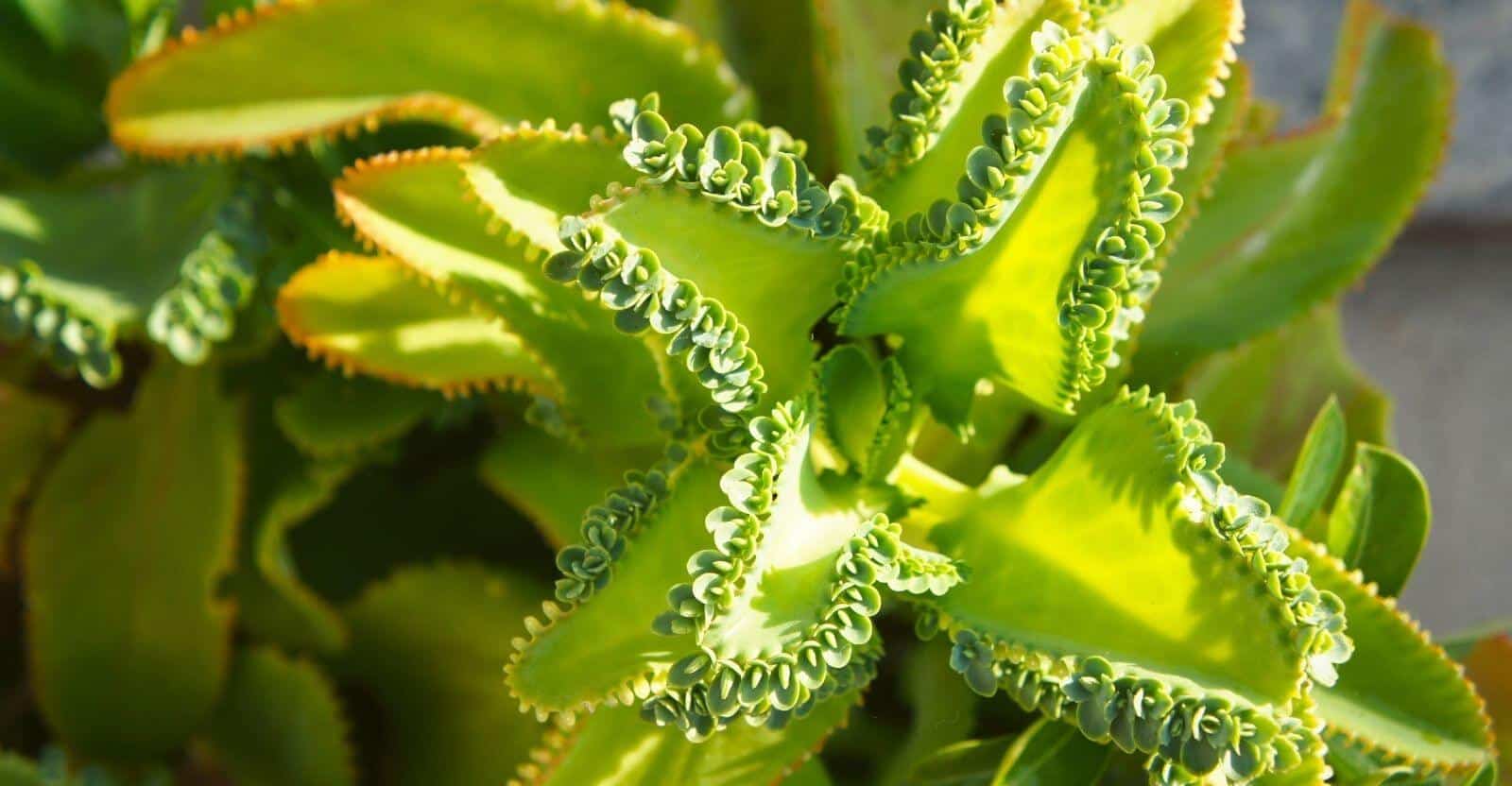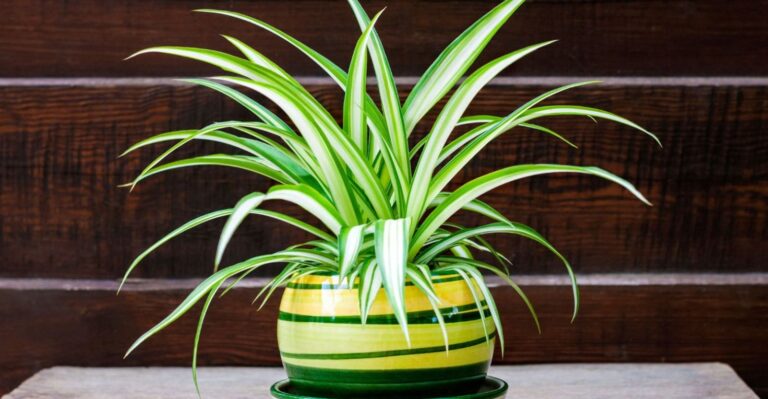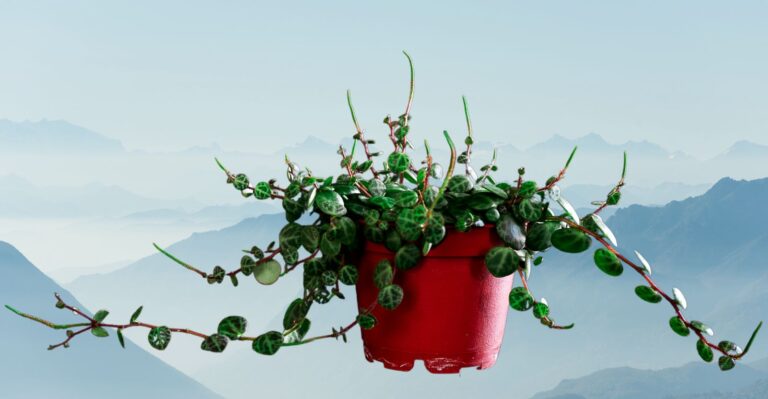Amazon has put together some great Home Gift Deals – save money and get your shopping done at the comfort of your home! Click here to see deals on Amazon
Mother of thousand is a popular houseplant for indoor gardening. This perennial succulent plant has several characteristics that make it grow well in homes. It’s also an excellent plant for beginners, as it’s easy to care for and forgives mistakes made by gardeners.
This article covers how to grow Mother of thousand plants, their unique features, and how to take care of them.
What is a Mother of a thousand plant?
The name “Mother of thousand plants” is derived from the Latin term “plant mille species,” which translates to plant of a thousand types. It has the scientific name of Kalanchoe daigremontiana or formerly known as Bryophyllum daigremontianum.
This succulent is native to the deserts of Africa and Madagascar. The plant can grow up to two feet high, and it has unique-looking foliage that resembles lettuce leaves. In North America, it’s also known as the Devil’s backbone, which is considered an invasive species and spreads to many parts of America.
The name is derived from the Crassula family genus, and it sprouts multiple green platelets from each of their leaves. This is quite a different plant than others as it’s a collection of several different plants that form a single entity.
It has narrowly pointed large green succulent leaves that can reach up to 7 inches long and 3 inches wide. These beautiful leaves have baby plantlets that grow along the serrated edges of leaves. These baby plantlets can be used to develop new plants.
A mature plant grows a pair of leaves directly opposite each other for better access to moisture and sunlight. Some people also call it an alligator plant or Mexican Hat plant, and it grows the best in USDA 9–11 zone.
Plant Growth Summary
| Size | 6 to 7 inches high |
| Sunlight | 4 to 6 hours of daily sunlight |
| Water | Once a week until topsoil gets dry again |
| Optimum temperature | 50°F–70°F (10°C–21°C) |
| Growth Rate | Medium |
| Soil | Sandy potting soil, such as cactus and succulent growing mix |
| Fertilizing | Unnecessary, if you needed, early spring to late autumn |
What is the difference between Mother of thousands and Mother of millions plant?
Mother of a thousand plant is a succulent that will grow one offshoot every time it produces a leaf. This means that you can have many plants from one original plant.

It has far broader leaves, with plantlets forming at the edges. These leaves grow alternatively at each side, allowing sufficient sunlight.
It blooms a cluster of light pink flowers in the spring on a smooth cylindrical stem with grayish-green color.
Mother of millions looks similar to Mother of thousand plants and often confuses inexperienced gardeners. It goes by the scientific name of Kalanchoe delagoensis and the common name of Chandelier plant or Christmas bell plant. The leaves of the Mother of millions don’t grow in alternating fashion, but it has a cluster of leaves sprouting from a single stem.

Mother of millions is a small, grow-growing plant known for its prolific production of small flowers and tiny viable seeds. In contrast, Mother of a thousand plant is a faster-growing plant with larger leaves and stems.
Although both plants can be grown indoors, Mother of millions prefers warmer climates, while Mother of thousand plants does better in cooler temperatures.
How do you take care of the Mother of thousands plants indoors?
There is a growing interest in growing Mother of thousand plants indoor and outdoor. It looks like great indoor decor for any home and a great gift for the gardening enthusiast. They don’t require much direct light, so they grow well on windowsills or darker rooms.
Although they’re great for newbies, they can be difficult to care for if you don’t know what to do! Here are some common questions people ask when growing this plant.
What is the best soil for a Mother of thousands?
A sandy, well-drained soil works the best for this plant since it’s succulent and has shallower roots. The ground needs to be gritty as well as porous. The best soil for these plants would be equal parts sand, perlite, and pumice.
You can also use any cactus potting mix from a garden store. It grows best in the terracotta pot with a hole at the bottom when planting indoors.
If you want a shorter but denser and bushier plant, grow it in a smaller pot. For bigger leaves and taller plants, you can use a larger pot.
If you’re using a regular garden potting mix, you can add sand and a few coconut choirs to improve the drainage and airflow to the roots. If it needs more drainage, you can add small rocks and pebbles at the bottom of the pot.
Read More: Best Potting Soil for Indoor and Outdoor Gardens in 2025
How much water does the Mother of thousands plants need?
Succulents are often known for being tough plants—quite literally because they can survive in drought conditions and extreme heat. If your goal is to keep the plant from dying while you’re away, you need to be aware of the amount of water it needs to live.
You should thoroughly water the plant about once a week on warm summer days. You should water again when the top few inches of soil get dry. The roots of succulents are very sensitive to water temperature. To prevent any shock to the roots, use water at room temperature.
When watering your plant, don’t pour water over the leaves but directly on the soil. This prevents the rot risk to delicate leaves when they get wet. You can reduce the watering frequency in winter and only water when the ground gets dry.
Note:
Don’t let the soil get completely dry; otherwise, it may kill the plant.
How much sunlight does kalanchoe Mother of thousands plant needs?
One of the essential aspects of gardening is sunlight. When it comes to succulents, Mother of thousand plants require a lot of the sun. For it to grow well, there should be at least 4 hours of sunlight daily.
However, you should be careful not to place it where it gets direct sunlight, resulting in the scorched leaf. When planting it indoors, you can use growing light to get some amount of indirect light. As a general rule, the more sunlight you provide, the more it will grow.
It prefers when the indoor temperature is around 50°F–70°F (10°C–21°C) for optimal growth. When planting in a pot and placed outdoor, you should bring it indoors when the temperature drops below 40°F(4.5°C).
You can place it near south and west-facing windows during the summer months so it can get long-term indirect sunlight.
If the plant doesn’t get enough sunlight, it grows tall with sparse leaves and won’t look appealing anymore. When that happens, you should consider placing it at a location where it can receive adequate light.
Should you fertilize Mother of thousand plants?
The Mother of thousand plants can be a beautiful addition to a garden, but many people are unsure if they need to fertilize it. The answer is no, as the plant doesn’t require much water or fertilizer.
It thrives well in dry conditions, but if you’re planting it outdoors in poor soil, you can apply slow-release fertilizer every three months. You don’t need to apply fertilizer during winter and fall.

Does Mother of thousands plant flowers?
Mother of thousands blooms new flowers in the wild, but it’s challenging to make them flower when planted indoors. It’s a susceptible plant that needs the right conditions to blossom.
It isn’t easy to make it flower indoors unless you put an extraordinary amount of care into creating the perfect blooming condition.
The flowers are light pink with a tubular bell shape and hang over the stalk. The flowering time for Mother of thousand plants is in late winter, where after the flowering, the plant dies.
Read More: Kalanchoe: Beautiful Flowering Succulent Growth & Care
Can you propagate Mother of thousands from leaves?
Yes, the plant is known for its ability to propagate from just a piece of one leaf. In order to propagate it from leaves, the leaves need to be left on the mother plant until they fully mature and then pull off tiny plantlets without damaging.
The leaf’s stem should stay attached to the plant when removed. This allows for easier rooting in water or soil. For the best results, ensure the cutting comes from a healthy plant. Bear in mind that leaf cuttings have no roots. Healthy mature leaves are necessary to make roots for any new baby plants.
The healthy fleshy leaves of Mother of thousand plants retain moisture and won’t wilt for weeks without water. If you’re not ready to plant right away, you can wrap the cuttings in a moist paper towel to keep them from drying out.
You can dip the leaf end in a rooting hormone powder (Amazon link) to kick-start the growth of meristematic tissue inside the petiole. Fill a small pot with a potting mix with equal parts sand and vermiculite.
The mix should be dense enough to hold the leaf-cutting in place but light and well-drained enough so it doesn’t rot.
Place the cutting in indirect light or outdoors in the shade. Depending on the weather and humidity, you can spray it with water to keep it properly moist but don’t overdo it. Watch for new growth and monitor the leaves to ensure they’re not wilting or drying out.
In three to four weeks, the roots start to develop, and you can transplant them in a bigger pot or plant it outdoor.
Why is your Mother of thousands plants dying?
Succulents and cacti are known for growing in extreme conditions and hostile environments. But if you see the plant leaves curling and eventually dying, the most common reason is overwatering and inadequate sunlight.
Follow the watering schedule and only water when the top few inches of soil dry. You can use your finger and insert it a couple of inches deep in the ground. If the finger remains wet, you shouldn’t water it anymore and check it a few days later.
If the plant is getting low sunlight, you should move it to nearby windows to get indirect sunlight. When you’re growing it in a basement where you don’t get natural sunlight, you can use growing light that helps to provide artificial sunlight. This is the one I use as it provides a Full Spectrum light for succulent plants.
If possible, gently shake the plant and check its root for any possible root rot or fungal growth. When that happens, it’s better to change the soil and remove the damaged or rotten portion of the root before replanting in fresh soil.
Is Mother of thousands toxic to cats and dogs?
Yes, the Mother of thousands plants is toxic to cats and dogs. This is because it contains toxins that can be harmful, especially for cats and dogs who have sensitive mounts and more delicate immune systems than humans do.
American Society for the Prevention of Cruelty to Animals (ASPCA) classifies the whole family of Kalanchoe family plants to be toxic to animals and humans due to the presence of a toxin called bufadienolide.
The toxin causes a change in the heart rate and, in extreme cases, heart failure. The flower is also toxic, and you should keep your pets away from these plants.
If pets have chewed on the leaves and flowers of the plant, they will show signs of dullness, foaming mouth, loss of appetite, diarrhea, and heart failure.
You must take your pet to the veterinarian within 24 hours of eating the plant. When keeping it indoors, you can place it at a higher location where kids and pets can’t reach.
Where can you buy the Mother of thousands plants?
There are several places you can buy this plant. Most garden centers and retail stores sometimes carry these during the summer. But the availability is often limited, and hard to find healthy plants.
The best place to buy it’s through online stores like Amazon and Etsy. Professional and individual growers sell wide colors and textures of succulents, including Mother of thousands.
You can also check social media, where plant enthusiasts can exchange exotic plants.
Conclusion
The Mother of thousand plants is a great way to add life and color to your garden or indoor house plant.
As long as it’s kept in sandy, well-drained soil, watered when the topsoil gets dry, and not placed in direct sunlight, you will have a thriving plant that provides a great-looking garden for years to come.
However, you should be careful when planting it outdoor due to its invasive tendencies and toxicity to pets. Do you want to check out more flowering succulents, read our article on 19 Amazing Flowering Succulents You Need to Plant.

Don’t forget to share this post







